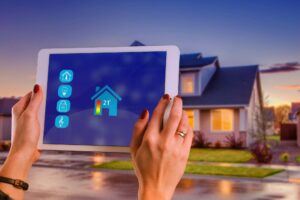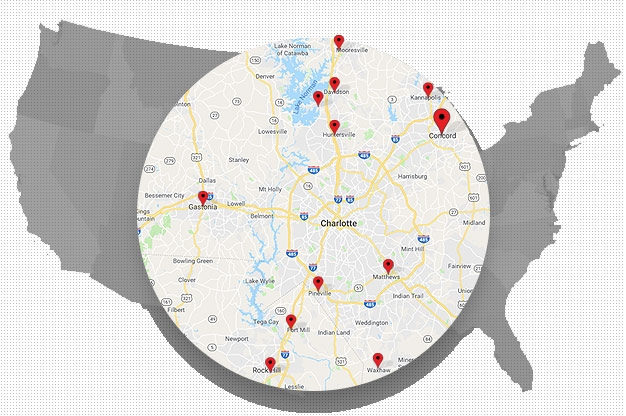The Importance of Radon Mitigation: Ensuring a Safe Living Environment for Homeowners

As homeowners, we strive to ensure the safety and well-being of ourselves and our families within the walls of our homes. However, what if there was a silent danger lurking in our home? One that is impossible to see, smell, or taste, yet can have long-lasting and detrimental effects on our health? We’re talking about radon – a radioactive gas that is the second leading cause of lung cancer in the United States.
This deadly gas can seep into our homes through cracks and crevices, putting us at risk without us even knowing it. That’s why radon mitigation is crucial in creating a safe living environment for homeowners. In this post, we will delve into the importance of radon mitigation and how it can help safeguard our homes and loved ones. So buckle up and get ready to discover the valuable insights that await you.
Understanding the Dangers of Radon Gas
Radon gas is a silent, invisible intruder that can pose a serious threat to your health. It is a radioactive gas that is produced naturally from the breakdown of uranium in the soil. As radon is a gas, it can easily enter your home through cracks in the foundation, gaps in plumbing, or even from the soil underneath your home’s crawl space. Once inside, it can accumulate and reach toxic levels, exposing you and your family to the potential risks.
Exposure to radon gas can lead to various health issues, with lung cancer being the most prominent concern. According to the EPA, radon exposure is responsible for approximately 21,000 lung cancer deaths in the United States each year. It is the second leading cause of lung cancer, right after smoking. Even if you are a non-smoker, long-term exposure to high levels of radon can significantly increase your risk of developing lung cancer.
The Importance of Radon Testing
Performing radon testing in your home is crucial to identify the presence of elevated radon levels. By conducting this testing, you can assess the magnitude of the radon problem and take appropriate measures to mitigate it effectively.
Short-term and long-term radon testing are the two types of testing methods commonly employed. Short-term testing involves placing a radon test kit in the lowest livable area of your home for a specific period, usually ranging from 2 to 7 days. This method provides a quick snapshot of the radon levels but may not capture everyday variations. On the other hand, long-term testing involves leaving the test kit in your home for a minimum of 90 days, ensuring a more accurate representation of the radon levels throughout different seasons.
Reduce Radon Levels with Effective Radon Mitigation Methods
If you discover elevated radon levels in your home, it is crucial to take prompt action to reduce the concentration of radon gas. Several effective radon mitigation methods can help you achieve a safer living environment.
-
Soil Suction Radon Mitigation
Soil suction, also known as sub-slab depressurization, is a widely used and highly effective method for reducing radon levels in homes. This mitigation technique involves installing a ventilation system beneath the foundation of your home to draw radon gas from the surrounding soil and safely vent it outside.
The process starts by creating suction points or a network of pipes inserted into the soil beneath the foundation. A fan is then installed to create negative pressure that draws the radon-laden air toward the pipes, preventing it from entering your home. The radon gas is safely vented outside, where it can quickly disperse and pose no threat to you or your family.
Soil suction radon mitigation is effective in reducing radon levels by up to 99%. However, the success of this method depends on factors such as the construction of your home, soil conditions, and the presence of a basement or crawlspace.
-
Sub-slab Depressurization
Sub-slab depressurization is another effective method commonly used in homes with a basement or concrete slab foundation. This mitigation technique involves creating suction points beneath the foundation to remove radon gas from the soil and redirect it to a safer location.
To implement sub-slab depressurization, a network of pipes is installed below the concrete slab or basement floor. These pipes are then connected to a vent located above the roofline, enabling the safe release of radon gas into the outdoor environment.
By creating this pressure differential between your home’s interior and the soil beneath, sub-slab depressurization prevents radon gas from entering your living space. It ensures that the radon is effectively directed outside, reducing the risks associated with prolonged exposure.
-
Crawlspace Ventilation
If your home has a crawlspace, ventilation can be an effective method for radon mitigation. Crawlspace ventilation involves installing a system that allows fresh air to be brought into the crawlspace while simultaneously expelling radon gas to the outside.
The ventilation system typically consists of fans and ductwork installed in the crawlspace. These fans work to create a constant flow of fresh air, diluting the concentration of radon gas present. The radon gas is then safely expelled outside, further reducing the potential health risks.
-
Radon-Resistant New Construction
If you are building a new home or undergoing extensive renovations, incorporating radon-resistant construction techniques can go a long way in preventing radon entry from the very beginning. By implementing these techniques, you can minimize the risk of radon gas seeping into your home and ensure long-term safety.
Radon-resistant construction techniques typically involve utilizing special materials and strategies to prevent radon intrusion. This can include the installation of a gas-permeable layer beneath the foundation, the use of plastic sheeting to prevent soil gases from entering, sealing all possible entry points, and incorporating a venting system for radon gas expulsion.
Taking Action for a Safe Living Environment
Now that you understand the importance of radon mitigation and the various methods available, it is crucial to take action to create a safe living environment for you and your family. If you have not done so already, schedule a professional radon test for your home to determine the radon levels accurately.
Based on the test results, reach out to a certified radon mitigation specialist who can recommend and implement the most appropriate mitigation method for your home. Professional guidance is vital to ensure the effectiveness and long-term success of radon mitigation efforts.
Do not underestimate the dangers of radon gas. By taking proactive measures to mitigate radon and create a safe living environment, you are prioritizing the health and well-being of your loved ones. Visit our website and learn more about radon mitigation solutions.
Learn more about Sedona Waterproofing Solutions at https://maps.app.goo.gl/esa44kMnQoTPHuTz9
Recent Posts
- How Crawl Space Encapsulation Benefits the Environment – An Expert Guide
- 6 Ways Professionals Keep Your Crawl Space in Top Shape
- Structural Repair Solutions for Crawl Spaces, Basements, and Foundations
- Essential Crawl Space Repair Tips Every Homeowner Should Know
- The Importance of Radon Mitigation: Ensuring a Safe Living Environment for Homeowners
Categories
- Basement Mold
- Basement Waterproof Foundation
- Basement Waterproofing
- Crawl Space Dehumidifier
- Crawl Space Encapsulation Cost
- Crawl Space Repair
- Crawl Space Waterproofing
- Encapsulation
- Foundation Repair
- Foundation Waterproofing
- French Drains
- Leaky Basement
- Mold Remediation
- Mold Removal
- Radon
- Slab Jacking
- Sump Pump
- Uncategorized
- Vapor Barrier
- Water Leak
- Waterproofing
- White Mold
Archives
- June 2024
- May 2024
- March 2024
- January 2024
- June 2023
- May 2023
- April 2023
- March 2023
- February 2023
- January 2023
- December 2022
- November 2022
- October 2022
- September 2022
- August 2022
- July 2022
- June 2022
- May 2022
- March 2022
- February 2022
- January 2022
- December 2021
- November 2021
- October 2021
- September 2021
- August 2021
- July 2021
- June 2021
- May 2021
- April 2021
- March 2021
- February 2021
- January 2021
- December 2020
- November 2020
- October 2020
- September 2020
- August 2020
- July 2020
- June 2020
- May 2020
- April 2020
- March 2020
- February 2020
- January 2020
- December 2019
- November 2019
- October 2019
- September 2019
- August 2019
- July 2019
- June 2019
- May 2019

